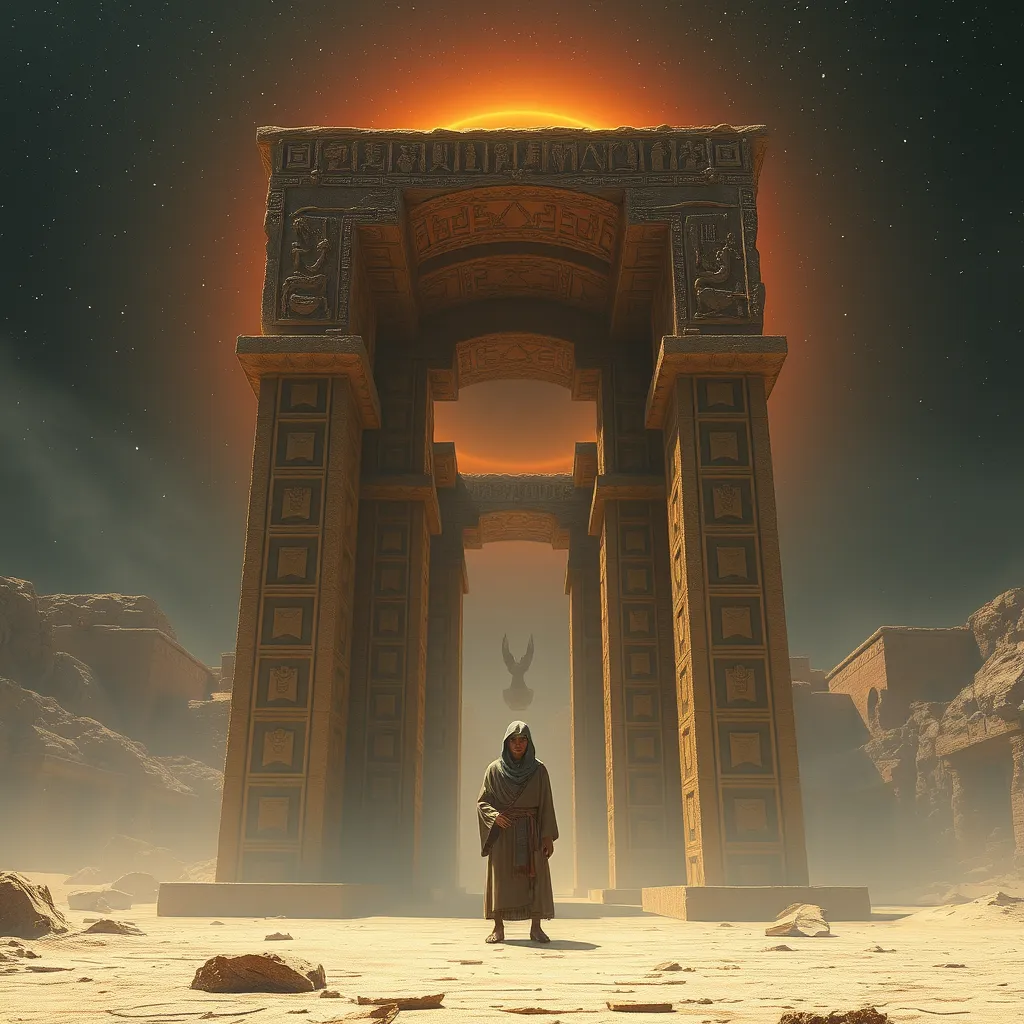The Duat: Beyond the Veil of Reality
I. Introduction to the Duat
The Duat, in ancient Egyptian belief, represents the realm of the dead, a place of both peril and transformation. It is a significant aspect of Egyptian mythology, symbolizing the journey the soul must undertake after death. The Duat is not merely a destination but a complex landscape filled with trials, deities, and profound symbolism, reflecting the ancient Egyptians’ understanding of life, death, and the afterlife.
II. Historical Context and Origins
The concept of the Duat is deeply rooted in ancient Egyptian mythology and cosmology. It first emerged during the early dynastic period, evolving through various dynasties. The Duat was intertwined with the beliefs surrounding the afterlife, where the soul would navigate through various challenges to reach the eternal realm.
Initially, the Duat was viewed simply as an underworld, but over time, its representation became more complex, incorporating various elements such as:
- Mythological narratives involving gods and goddesses.
- Symbolic landscapes representing different aspects of existence.
- Rituals and practices aimed at ensuring safe passage for the deceased.
III. The Structure of the Duat
The Duat is often described as a vast and intricate realm comprised of various landscapes that reflect both the beauty and terror of the afterlife. It is depicted as a dark, watery expanse with numerous realms, including:
- Fields of Iaru: A paradise for the blessed souls.
- Regions of torment for the wicked.
- Labyrinthine paths that challenge the souls as they journey.
Symbolically, the Duat represents the duality of life and death, illustrating the ancient belief that death is not an end but a transition to another state of existence. Each aspect of the Duat encapsulates the ancient Egyptians’ understanding of moral order, cosmic balance, and the eternal cycle of life.
IV. The Journey through the Duat
Upon death, the soul embarks on a perilous journey through the Duat. This journey is fraught with challenges and guided by key deities essential to navigating the afterlife:
- Osiris: The god of the afterlife, who presides over the judgment of souls.
- Anubis: The jackal-headed god who guides and protects the dead, overseeing the embalming process and the weighing of the heart.
- Thoth: The god of wisdom who records the outcomes of the judgment.
The journey involves crossing through various gates and overcoming obstacles, which may include facing mythical creatures and undergoing tests of the soul’s purity and worthiness.
V. Trials and Challenges in the Duat
One of the most significant trials in the Duat is the weighing of the heart, a ritual that determines the fate of the deceased. Here, the heart of the deceased is weighed against the feather of Ma’at, the goddess of truth and justice. The outcomes can vary:
- If the heart is lighter than the feather, the soul is deemed pure and is allowed to enter the Field of Iaru.
- If the heart is heavier, it is devoured by Ammit, a fearsome creature, resulting in the soul’s eternal damnation.
In addition to the weighing of the heart, the soul may encounter various guardians and mythical creatures that serve to test its resolve and integrity. These encounters are symbolic of the inner trials one faces throughout life.
VI. Art and Literature Depicting the Duat
The Duat has been richly represented in ancient texts and tomb inscriptions, which serve as both artistic expressions and spiritual guides for the deceased. Key sources include:
- The Book of the Dead: A collection of spells and prayers designed to assist the dead in navigating the Duat.
- Tomb paintings: Illustrations that depict the journey through the Duat, showcasing the various trials and divine entities encountered.
Artistic representations often feature vibrant colors and intricate details, emphasizing the contrast between the darkness of the Duat and the light of the afterlife’s promise.
VII. The Duat in Modern Culture
The concept of the Duat has permeated modern culture, influencing various forms of literature, film, and art. It serves as a source of inspiration for creators exploring themes of death, transformation, and the afterlife. Notable examples include:
- Literature: Books that reimagine the Duat’s landscapes and narratives, exploring the psychological aspects of death.
- Film: Movies that incorporate Egyptian mythology, often depicting the Duat as a fantastical realm.
- Art: Contemporary artists using the Duat as a metaphor for personal journeys and existential exploration.
Additionally, the Duat holds relevance in modern spiritual practices, with some individuals drawing parallels between its teachings and contemporary beliefs about the afterlife and transformation.
VIII. Conclusion: The Duat as a Metaphor for Transformation
The Duat transcends its origins as a mere afterlife destination, becoming a profound metaphor for transformation. It reflects not only the ancient Egyptians’ beliefs but also resonates with modern concepts of personal and spiritual evolution. The journey through the Duat symbolizes the trials we face in life, the choices we make, and ultimately, the transformation that arises from our experiences.
As we reflect on the significance of the Duat, we find that it serves as a powerful reminder that life and death are intertwined, and through understanding the challenges of the Duat, we can embrace our own transformations in the journey of life.





